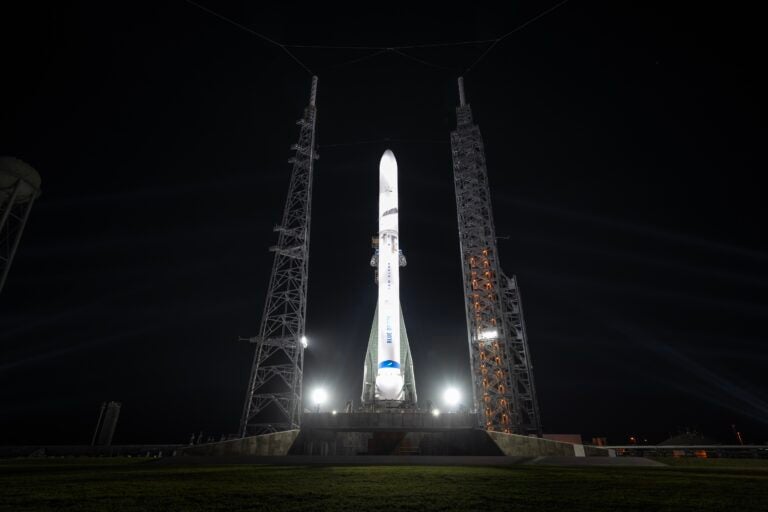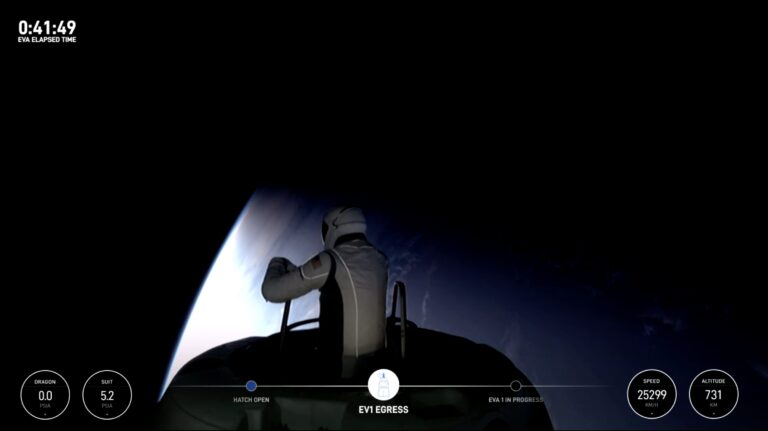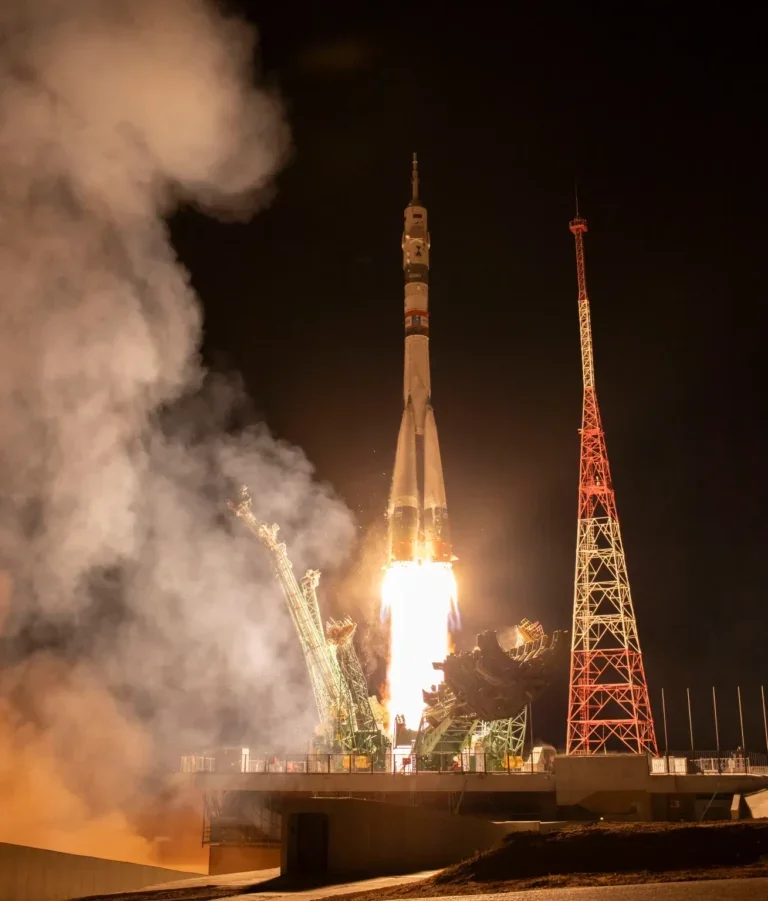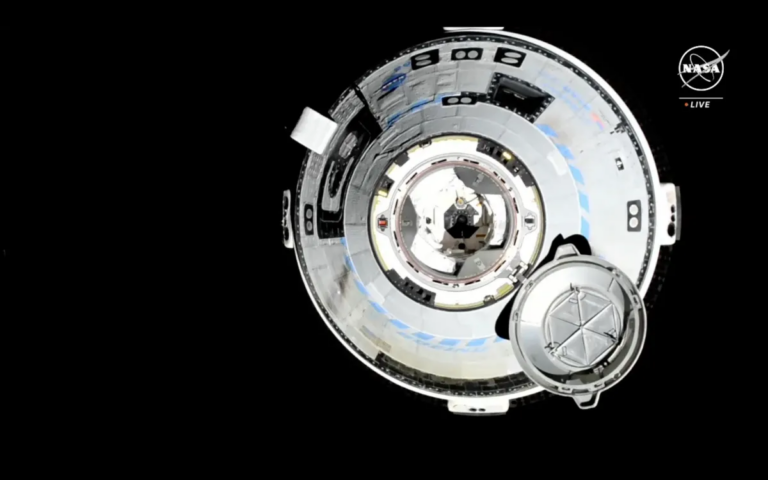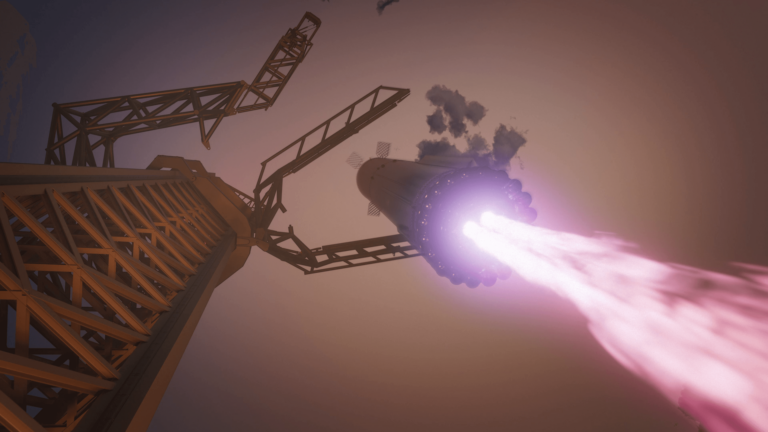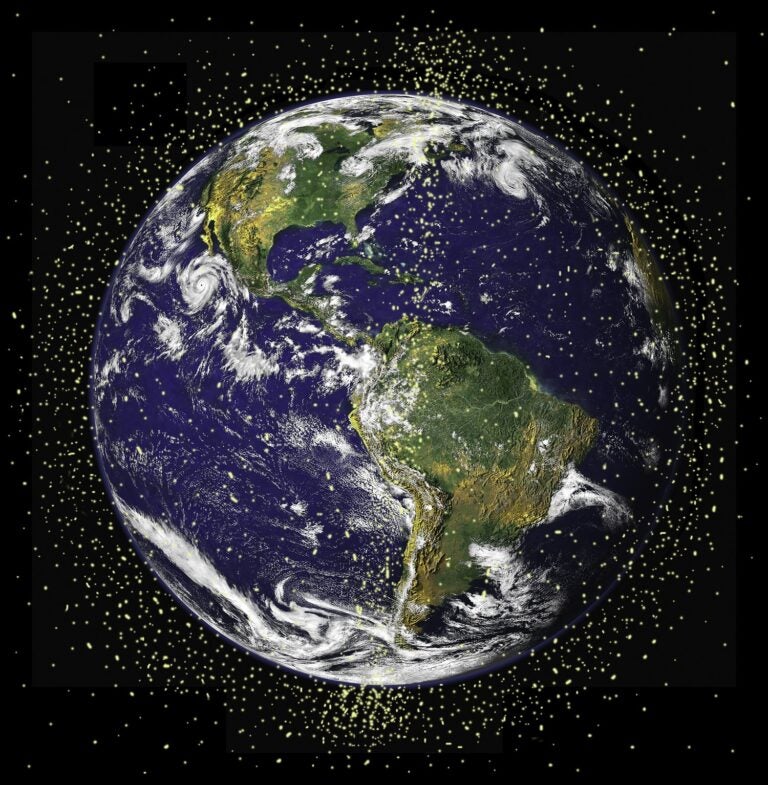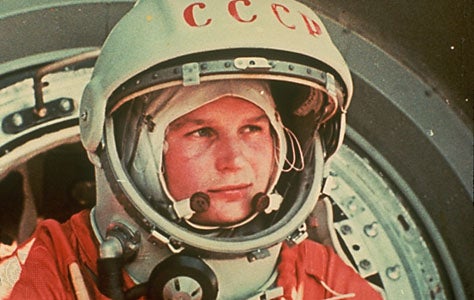
On a drab Sunday in Moscow in November 1963, a dark-suited man stood beside his veiled bride, whose bashful smile betrayed the merest hint of nerves. Despite the extraordinarily lavish surroundings of the capital’s Wedding Palace, it might have been any normal wedding but for one thing: Both groom and bride were cosmonauts, members of Russia’s elite spacefaring fraternity.
Two years earlier, that bride, Valentina Tereshkova, had been a factory seamstress and amateur parachutist with more than 100 jumps to her name when she’d volunteered for the cosmonaut program. Now, the 26-year-old, whom TIME magazine dubbed “a tough-looking Ingrid Bergman,” was among the most famous women in the world, an accolade she had earned just months ago by becoming the first female to leave the planet.
Sixty years on from her pioneering Vostok 6 mission, more than 70 women from around the globe have followed in Tereshkova’s footsteps, crossing that ethereal boundary between ground and space. Some have commanded space missions, helmed space stations, made spacewalks, spent more than a cumulative year of their lives in orbit, and even flown with a prosthesis. And women from Britain, Iran, and South Korea have become their countries’ first national astronauts, ahead of male counterparts.
Humble beginnings
Born in the tiny Russian hamlet of Bolshoye Maslennikovo, 160 miles (250 kilometers) northeast of Moscow, Tereshkova scarcely knew her father. A tractor driver prior to his service, he died in the Finnish Winter War when she was two years old. Her mother single-handedly raised three children while also laboring in the Krasny Perekop textile mill.
Tereshkova did not begin formal schooling until nearly age 10 and left at the age of 16, finishing her education via correspondence courses. The young girl worked making coats, apprenticed in a tire factory, then joined her mother and sisters at the loom. An interest in aviation eventually drew Tereshkova to an air sports club, where she made her first parachute jump at age 22.
In 1961, she applied to Russia’s secretive space program, just as officials were considering flying a woman in space as the obvious next step after Yuri Gagarin had become the first man in space in April that year. Early in 1962, five female finalists — Tatiana Kuznetsova, Valentina Ponomaryova, Irina Solovyova, Zhanna Yorkina, and Tereshkova — arrived at the cosmonauts’ training facility on Moscow’s forested outskirts to learn the rudiments of space travel. All were seasoned parachutists. This was a necessary prerequisite, as during the descent back to Earth, cosmonauts ejected from their Vostok capsules at an altitude of 4 miles (7 km) and landed beneath a parachute canopy.
Tereshkova was not top of the crop in technical preparedness or skill. Unlike NASA’s steely-eyed astronauts, she was no fighter ace or test pilot or intellectual. Indeed, the best praise bestowed by the cosmonauts’ commander, stone-faced General Nikolai Kamanin, was that she was “suitably feminine.” But her humble origins and gushing support for Russia’s ruling regime made her an ideal pawn for Premier Nikita Khrushchev, for whom space exploration and Soviet propaganda were dual faces of the same coin. He desired to promulgate the fiction that under Soviet socialism anyone could go into space. In a high-stakes, high-risk environment, it was a huge gamble.
To space
The original mission plan envisaged either one woman flying for three to four days or two women launching in separate Vostok capsules. But this changed in March 1963. Instead, male cosmonaut Valeri Bykovsky would attempt a record-breaking weeklong flight on Vostok 5, with Tereshkova launching on Vostok 6 partway into his mission for few-day-long mission of her own.
Shortly after Bykovsky’s June 14th launch, his rocket underperformed and limited his mission from eight to five days. Nonetheless, it still ensured a world record at the time. In Moscow, Khrushchev was hosting Harold Wilson, leader of Britain’s Labour Party. When Wilson asked how many cosmonauts Khrushchev had in space this time, the premier could not help but gloat: “Only one… so far!”
Tereshkova’s Vostok 6 mission launched at 12:29 P.M. Moscow Time on June 16th. The rocket sent her into an orbital configuration that caused her spacecraft and Bykovsky’s to naturally pass within 3 miles (5 km) of each other twice daily. Three hours after liftoff, Tereshkova heard Bykovsky radioing her callsign, Seagull, and the pair were soon in regular voice contact. At one point, Bykovsky quipped that Tereshkova was “singing songs for me.”
Her three-day mission proved a political triumph for Khrushchev, surpassing all of NASA’s Project Mercury astronauts’ time in space combined. She photographed terrestrial cloud cover and landmasses beneath her flight path and was astounded by the “light blue, beautiful band” of the horizon over the poles.
But rumor swirled that Tereshkova did not adapt well to the strange weightless environment, appearing tired and weak in televised images from space. She suffered motion sickness, consumed barely half of her food, and grumbled about a lack of provisions to clean her face or teeth. She found the provided bite-sized chunks of bread dry and tasteless, and despite Tereshkova’s penchant for Vostok’s fruit juices and cutlet pieces, she began craving Russian black bread, potatoes, and onions as her mission neared its end.
That end came June 19th, after 70 hours and 48 orbits. The capsule’s descent was commanded automatically. After ejecting, Tereshkova mistakenly opened her helmet visor and was struck by a small piece of falling metal; the glancing blow left a nasty cut on her face. Barely missing a lake in the prevailing wind, she landed safely and was welcomed home by a clutch of kindly — though somewhat perplexed — locals, who offered her fermented milk, cheese, flatcakes, and bread.
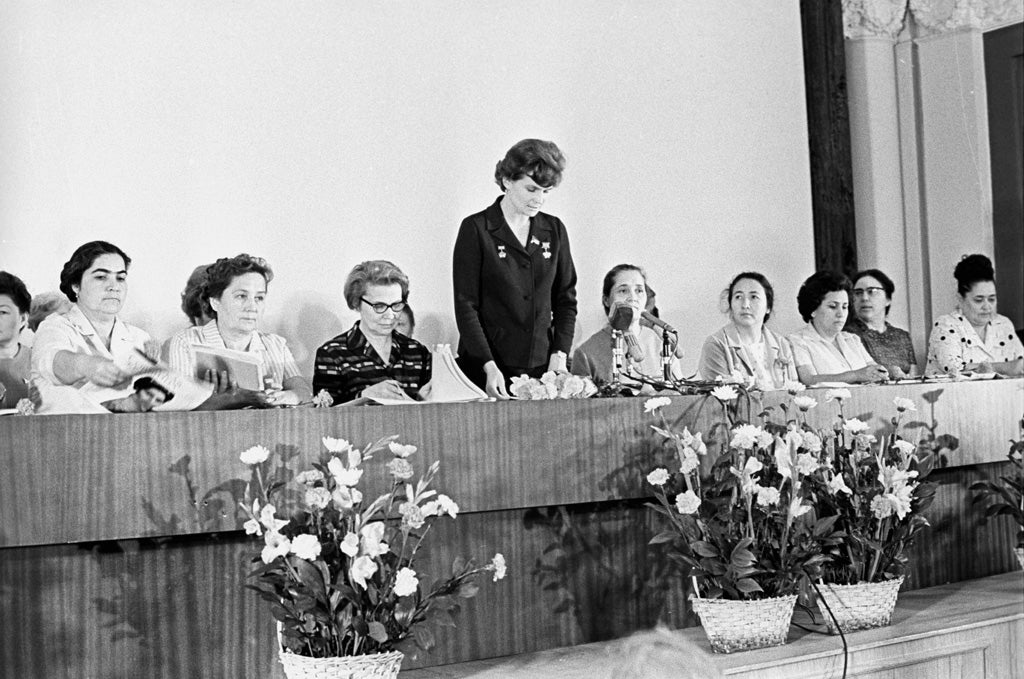
A complicated legacy
Following Vostok 6’s success, Khrushchev crowed that Russia offered its women a far better lot than the capitalist West: Under Soviet socialism, he said, women could prosper and reach the stars. But the propagandist reality of Tereshkova’s flight was laid bare when no more Russian women entered space for another two decades. Even today, the total number of female cosmonauts can be counted on two hands, accounting for just 8 percent of all women launched into space to date.
Like Gagarin before her, who logged the shortest orbital mission by any male spacefarer, Tereshkova’s time in space is also the shortest of any woman’s. Neither flew again, as Gagarin was killed in an aircraft crash before he could complete a second mission. Tereshkova earned a doctorate in aerospace engineering and became active in politics. Although she was sanctioned by the U.S. in 2022 for her support of Vladimir Putin’s attempted annexation of Ukraine, Valentina Tereshkova’s spaceflight remains a shining example of the triumph of the human spirit over fierce adversity.




